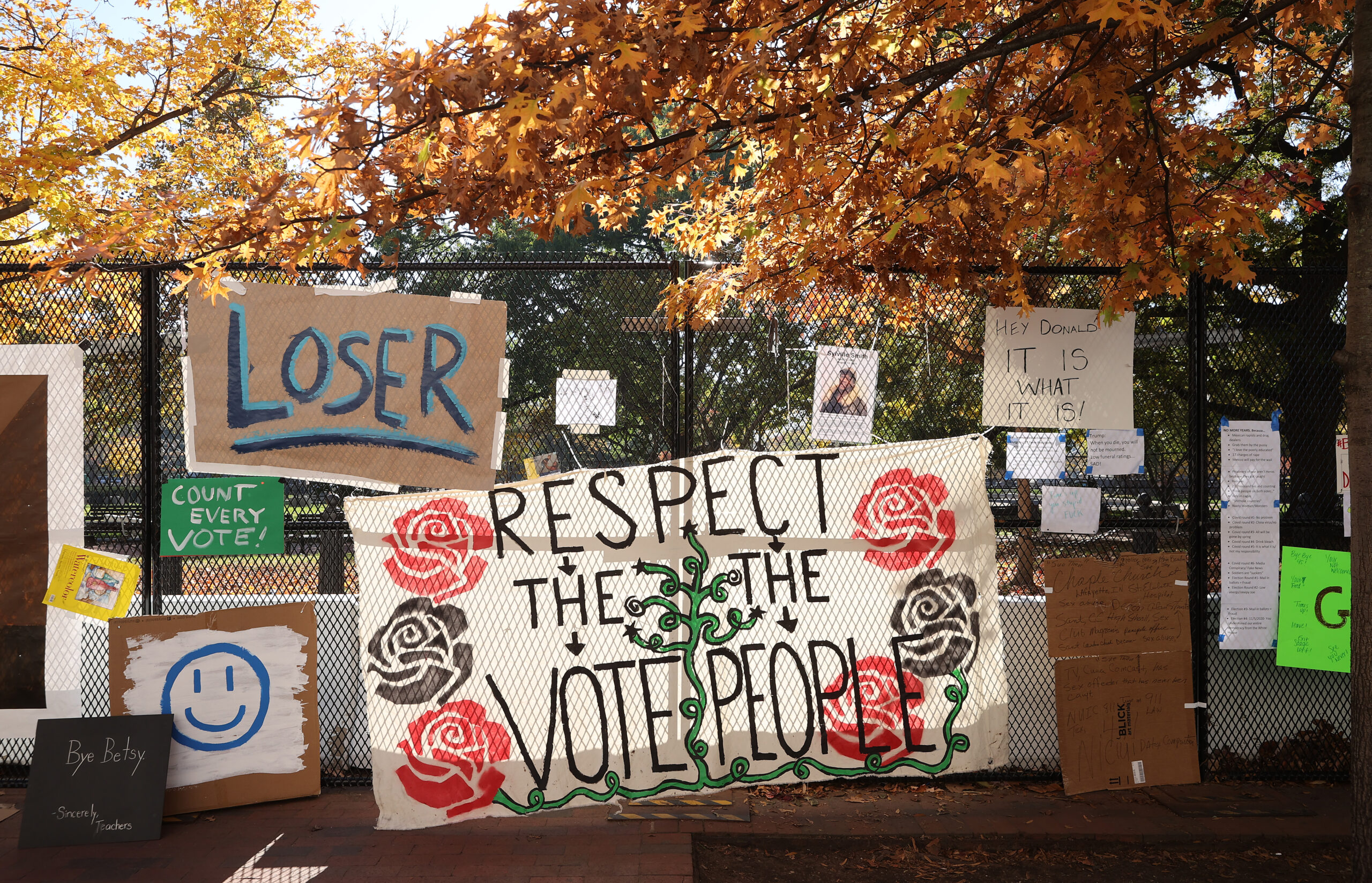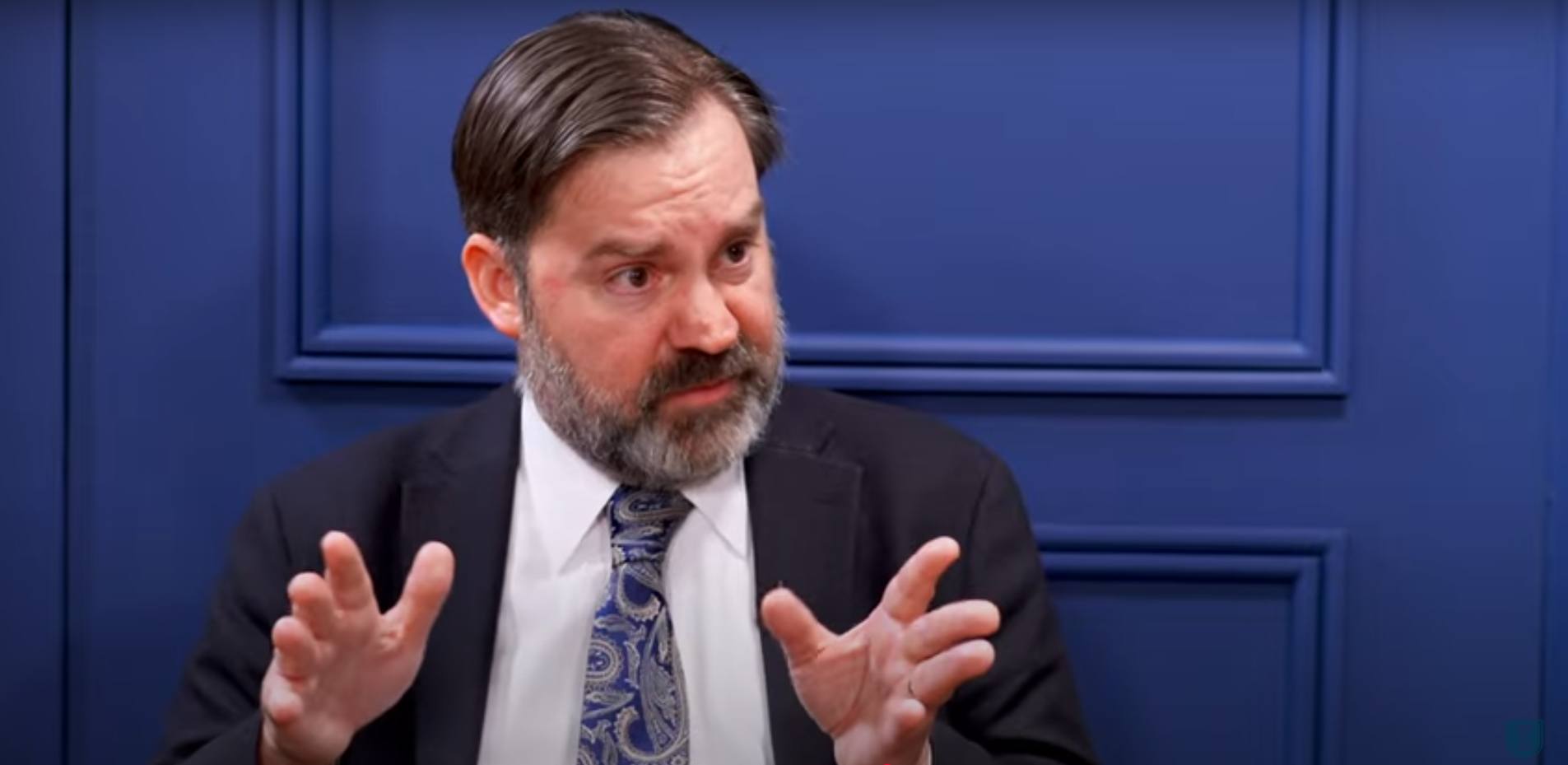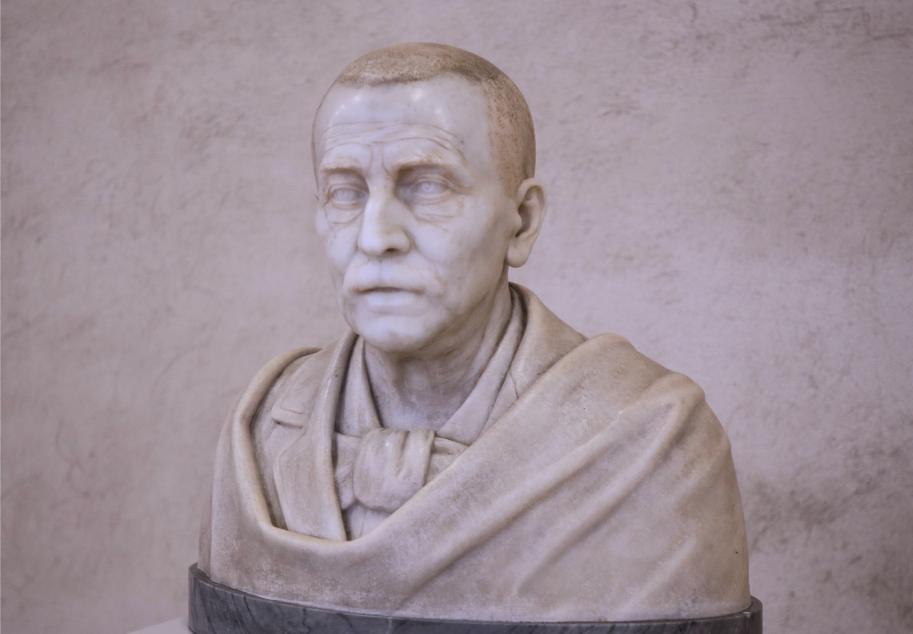After Nationalism:
Being American in an Age of Division
By Samuel Goldman
(University of Pennsylvania Press, 2021)
In his inaugural address in January, President Joe Biden appealed repeatedly to the need to overcome American divisions. “To restore the soul and to secure the future of America,” Biden said, “requires more than words. It requires that most elusive of things in a democracy: unity.” With hyperbole befitting the occasion, he concluded, “We have never, ever, ever failed in America when we have acted together.”
That recurrence to togetherness was surely intended to distinguish Biden from his predecessor. Yet thematically, Biden’s inaugural resembled none more than Donald Trump’s. “We must speak our minds openly, debate our disagreements, but always pursue solidarity,” Trump had said exactly four years earlier. “When America is united, America is totally unstoppable.”
This is what the rhetoric of an era of division sounds like. The sense that what’s holding us back is our disunity is one sentiment that now does seem to cut across party lines. Yet Biden’s and Trump’s words also demonstrate that unity itself can be a divisive notion. Americans yearning for solidarity don’t always mean the same thing by it—except inasmuch as they all mean they would like to see less disagreement with their own views and priorities. In fact, the question of just what ought to bring Americans together now underlies a lot of the discord in our politics.
That irony is part of what makes this moment in America so confusing. Untangling it would require a perceptive, historically minded, and obstinately unorthodox analyst—one who can sympathize with the various partisans while also seeing through their pretensions. Such scholars are rare, but in his new book, After Nationalism, Samuel Goldman ably shows himself to be one.
Goldman teaches political science at George Washington University, where he runs the Loeb Institute for Religious Freedom and directs the Politics and Values Program. He is also, among other things, the literary editor of this journal. Author of the insightful God’s Country, about Christian Zionism in America, he has a knack for illuminating the complicated links between the ideals people articulate and the ways in which they act politically. This is surely the most complex facet of the study of politics, as it requires some of the earnestness of the philosopher and some of the guile and realism of the practitioner. Sometimes people who think they’re idealists are kidding themselves, but sometimes people who think they’re cynics are, too. Everybody’s theory of himself lacks distance and perspective, yet it cannot be dismissed. Politics is therefore often a jumble of genuine high-mindedness and outrageous self-delusion. Goldman has a clearer grasp of this than perhaps any American political scientist working today, and he has taken on a subject much in need of his peculiar skills.
The term nationalism in his title may do Goldman’s argument a disservice. Nationalism can mean several things. It can, for instance, offer an organizing principle for global affairs. This is nationalism as opposed to globalism, which is the way in which a lot of the conservative debate about it (particularly as it has been moved by the work of Yoram Hazony) has employed the term in recent years. Or it could offer an organizing principle for domestic affairs. This is nationalism as opposed to localism, which is what progressive nationalism has generally described. Or it can offer an organizing principle of populism—the idea of a national character possessed by the people and detested by the elites.
Goldman gestures toward these at times, often by way of contrast, but he does not do enough to distinguish his notion of nationalism from them. By nationalism, he has in mind something else—something more like the organizing principle of national unity and love of country. What do Americans have in mind when we call for solidarity and patriotism? Around what, exactly, do we think our country should be unified? What makes America special, and what should hold it together?
As Goldman shows, the answers to such questions have changed over time in ways we are often loath to acknowledge. At first, our society’s idea of itself was essentially covenantal, as he puts it. It was rooted in the sense that America has a special purpose in God’s plan, that it is a kind of new Israel called to instantiate a uniquely moral politics. “Emerging from New England,” he writes, this view “ultimately sought to constitute all of America as an offshoot of the Puritan experience.”
Founded not in blood and soil but in a cultural identity defined by a distinct religious outlook, this ideal reached well beyond New England but eventually proved unable to contend with cultural and demographic transformations. “Initially a concrete program of government and culture, the New English covenant retreated through the nineteenth century into social snobbery and academic fixation,” Goldman argues. “It is in these diminished forms that it survives today.”
The irrepressible variety that made a covenantal ideal of unity harder to sustain became the foundation of the next ideal of nationalism that Goldman describes—the notion of our society as crucible or melting pot, in which people of different backgrounds could be forged into a new American identity. Whereas a nationalism of covenant looked backward to Puritan origins or founding conditions, a nationalism of the crucible looked forward to a new human type taking form in this country. That future orientation also justified geographic expansion, economic growth, and mass immigration. America was building something big and new and exciting, and could be unified around a kind of immense industrial enterprise that spanned a continent.
But try as it might to serve as a foundation for unity, this idea could not help but be unsettling to many Americans, who saw in the transformations of nineteenth-century America the obliteration of a unified national character. Resistance to immigration and to industrialization was not ultimately overcome by the case for the melting pot. Rather, the resulting debates accelerated the emergence of a third organizing principle for unity—a creedal patriotism asserting that America was defined and held together by a set of essentially liberal ideals.
The creed was the foundation in particular for a wartime nationalism, meant to distinguish American patriotism from the blood and soil ideals of fascism and the inhumanity of communism, and to articulate our distinct idealism. Like the covenant and the crucible, it sought to describe what made America different. And in a century of barbarous ideological warfare, our country wanted to distinguish itself as humane, open, and free.
A Common National Memory
Just as the melting pot was an answer to the inadequacy of a covenantal nationalism, so the creed sought to take on the failures of the crucible. “Creedal nationalism was an attempt to explain the continuity of American institutions despite the transformation of its population,” Goldman explains. “The nation could absorb so much immigration, liberal theorists reasoned, because its essence lay in ideas rather than blood, soil, or religious confession.” And like the two prior modes Goldman describes, creedal nationalism came to view itself as the original American self-conception, reaching back to the Founding rather than framed for twentieth-century purposes.
The logic of the creed pointed toward a national agenda that came to define midcentury liberalism: greater racial equality, anti-fascism, and anti-communism. Yet it also tended to hold America up to an impossible standard and so in effect to reveal our divisions. “The civil rights movement and Vietnam War exposed underlying disagreements about American meaning and purpose,” Goldman argues. “Those disagreements have never really been resolved. The search for a creedal nation was a failure.”
If there is to be some compromise between a nationalism of creed and one of blood and soil it might well be found in the realm of common national memory. Well-meaning contemporary nationalists point to history as a repository of lessons in unity. But Goldman insists this is not likely to work, because it makes our history itself a subject of unending controversy. “The culture wars continue because we want interpretations of the past to stand as proxies for political argument in the present. And that is a burden history cannot bear.”
In these debates about the basic character of our society, neither side is in any position to decisively persuade the other. Goldman’s title, After Nationalism, is not meant to suggest that nationalism is a thing of the past. Rather, alluding to Alasdair MacIntyre’s seminal book After Virtue, it is meant to suggest that this crucial concept has become unable to support the weight of our desire for unity:
We live “after nationalism,” in the sense that our public discourse is characterized by appeals to various and potentially incompatible conceptions of the nation. The real debate is not only between “America first” and those who would rank it second or lower in their order of loyalties. It is between rival accounts of what America is—and thus where its interests lie.
And yet, precisely by understanding our condition in this way, Goldman suggests we might find an organizing principle for our national sentiments that could help us recover some unity of purpose. He comes close to suggesting that an appeal to the American creed can still work, but with a caveat. The creed, he says, “has to be disentangled from the myth of a stable American idea, handed down intact since 1776.” That myth blinds us to the complexity of our history, and so of our society. And it tends to exclude from our self-understanding any philosophies that aren’t crudely liberal. “Rather than treating it as a quasi-religious orthodoxy, then,” Goldman writes, “we might regard the creed in a more modest light. Constitutionalism, the rule of law, and civic equality can be seen as rules of coexistence for people who otherwise don’t share much.”
There is something profoundly unsatisfying about this, of course, and Goldman is the first to admit that. But he argues that this is not a nationalism of cold, procedural liberalism, because its purpose is to enable communities of shared moral meaning to flourish. “These smaller, more coherent groups, rather than abstractions of loyalty and solidarity, are the appropriate setting for cultivating particular virtues that we cannot reasonably expect more than three hundred million people spread over much of a continent to share.”
That means that what we should want from our national politics is just what it now plainly fails to provide us. “Our problem, in other words, is not that we have forgotten how much Americans have in common,” Goldman writes, “but that we have undermined or abandoned structures and organizations that express and embody disagreement. Political parties, labor unions, and religious communities must be allowed to pursue their clashing views of public policy, economic issues, and the meaning of life. It is through their conflict that we will discover the terms on which we can live together.”
Arenas of contention—from Congress to the university to journalism and beyond—are under fierce assault now, yet they are precisely what we need to be most fully ourselves. In this brilliant and remarkably accessible book, Samuel Goldman helps us see why any American quest for unity must recognize the peculiar character of American nationalism: republican and liberal, proud but contentious, procedural while intensely moralistic, endlessly frustrating yet utterly glorious, and always fighting to define itself.
Yuval Levin is the Beth and Ravenel Curry Chair in Public Policy at the American Enterprise Institute and editor in chief of National Affairs. His latest book is A Time to Build: From Family and Community to Congress and the Campus, How Recommitting to Our Institutions Can Revive the American Dream, winner of the 2021 ISI Conservative Book of the Year award.















